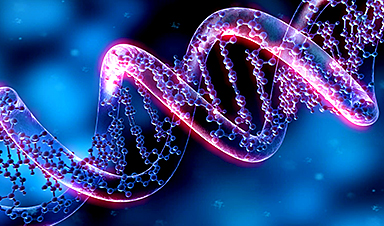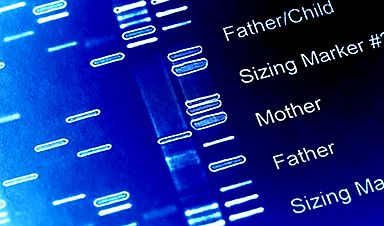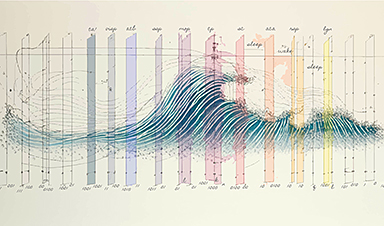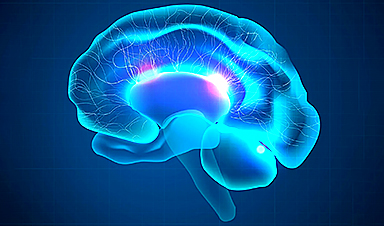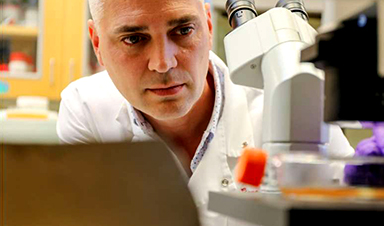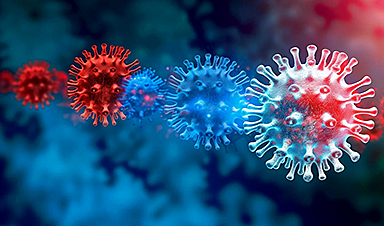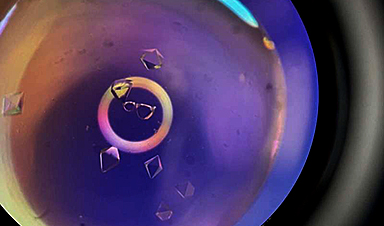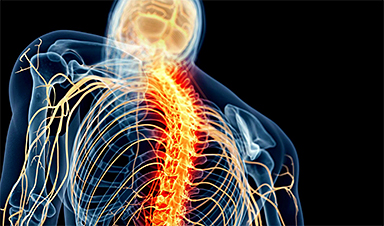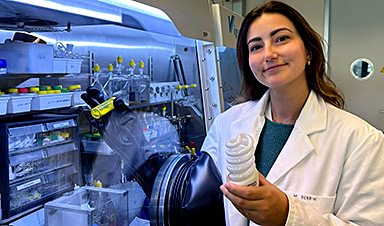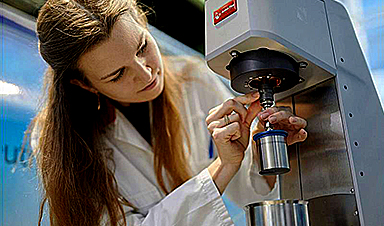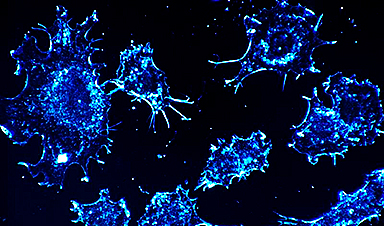A group of scientists collaborated to release comprehensive structures of the entire human opioid receptor family, with the aim of facilitating the development of more precise pain medications.
In an ongoing endeavor to enhance opioid pain medications, scientists from the United States and China utilized cryoEM technology to determine the comprehensive structures of the entire family of opioid receptors when bound to their natural peptides. Further structure-informed biochemical studies were conducted to gain a deeper comprehension of the peptide-receptor selectivity and drug signaling mechanisms.
The findings, published in the journal Cell, offer a comprehensive structural framework that should assist drug developers in creating safer drugs for the alleviation of severe pain.
Opioid drugs relieve pain by mimicking a naturally occurring pain-relief function within our nervous symptoms. They are the best, strongest pain relievers we have. Unfortunately, they come with side effects, some severe such as numbness, addiction, and respiratory depression, leading to overdose deaths.

Alignment of peptide-bound opioid receptors reveals structural features, such as steric effects, that contribute to the subtype-selective binding and functional outcomes observed in biochemical assays. Credit: Roth Lab, UNC School of Medicine
Scientists have been trying for many years to overcome the side-effect problem in various ways, all involving one or more of four opioid receptors to no avail. One way scientists continue to explore is the creation of peptide or peptide-inspired small molecule drugs.
Peptides are short chains of amino acids; think of them as short proteins. Certain naturally occurring, or endogenous, peptides bind to opioid receptors on the surface of cells to create an analgesic effect, also known as pain relief. Think of an analgesic like an anesthetic, except that analgesics do not “turn off” the nerves to numb the body or alter consciousness. So, the idea is to create a peptide drug that has a strong analgesic effect, without numbing nerves or altering consciousness, or causing digestive, respiratory, or addiction issues.
“The problem in the field is we’ve lacked the molecular understanding of the interplay between opioid peptides and their receptors,” said Roth, co-senior author and the Michael Hooker Distinguished Professor of Pharmacology. “We’ve needed this understanding in order to try to rationally design potent and safe peptide or peptide-inspired drugs.”
Using cryogenic electron microscopy, or cryoEM, and a battery of biomechanistic experiments in cells, the Xu and Roth labs systematically solved the detailed structures of endogenous peptides bound to all four opioid receptors. These structures revealed details and insights into how specific naturally occurring opioid peptides selectively recognize and activate opioid receptors. The researchers also used exogenous peptides, or drug-like compounds, in some of their experiments to learn how they activate the receptors.
The cryoEM structures of agonist-bound receptors in complex with their G protein effectors (called their “active state”) represent what these receptors look like when they are signaling in cells, giving a detailed view of peptide-receptor interactions. The Roth lab used the structures solved by the Xu lab to guide the design of mutant receptors and then tested these receptors in biochemical assays in cells to determine how they alter receptor signaling. Understanding these interactions can then be used to design drugs that are selective for opioid receptor subtypes, as well as to produce certain signaling outcomes that may be more beneficial than those of conventional opioids.
“This collaboration revealed conserved, or shared, mechanisms of activation and recognition of all four opioid receptors, as well as differences in peptide recognition that can be exploited for creating subtype-selective drugs,” said DiBerto, first author and Ph.D. candidate in the Roth lab. “We provide more needed information to keep pushing the field forward, to answer basic science questions we hadn’t been able to answer before now.”
Previous research showed the structure of opioid receptors in their inactive or active-like states, with active state structures only existing for the mu-opioid receptor subtype, the primary target of drugs like fentanyl and morphine. In the Cell paper, the authors show agonist-bound receptors in complex with their G protein effectors, made possible through cryoEM technology that did not exist when currently used medications were being developed.
Drugs such as oxycontin, oxycodone, and morphine cause various effects inside cells and throughout the nervous symptom, including pain relief. But they have effects in the digestive and respiratory systems, too, and interact with cells to lead to addiction. Fentanyl, meanwhile, is another powerful pain reliever, but it binds to opioid receptors in such a way as to cause severe side effects, including the shutdown of the respiratory system.
The thrust behind such research led by Xu and Roth is to home in on the mechanistic reasons for pain relief potency without triggering the cellular mechanisms that lead to severe side effects and overdosing.
“We are attempting to build a better kind of opioid,” Roth says, “We’re never going to get there without these kind of basic molecular insights, wherein we can see why pain is relieved and why side effects occur.”
News
The Silent Battle Within: How Your Organs Choose Between Mom and Dad’s Genes
Research reveals that selective expression of maternal or paternal X chromosomes varies by organ, driven by cellular competition. A new study published today (July 26) in Nature Genetics by the Lymphoid Development Group at the MRC [...]
Study identifies genes increasing risk of severe COVID-19
Whether or not a person becomes seriously ill with COVID-19 depends, among other things, on genetic factors. With this in mind, researchers from the University Hospital Bonn (UKB) and the University of Bonn, in [...]
Small regions of the brain can take micro-naps while the rest of the brain is awake and vice versa
Sleep and wake: They're totally distinct states of being that define the boundaries of our daily lives. For years, scientists have measured the difference between these instinctual brain processes by observing brain waves, with [...]
Redefining Consciousness: Small Regions of the Brain Can Take Micro-Naps While the Rest of the Brain Is Awake
The study broadly reveals how fast brain waves, previously overlooked, establish fundamental patterns of sleep and wakefulness. Scientists have developed a new method to analyze sleep and wake states by detecting ultra-fast neuronal activity [...]
AI Reveals Health Secrets Through Facial Temperature Mapping
Researchers have found that different facial temperatures correlate with chronic illnesses like diabetes and high blood pressure, and these can be detected using AI with thermal cameras. They highlight the potential of this technology [...]
Breakthrough in aging research: Blocking IL-11 extends lifespan and improves health in mice
In a recent study published in the journal Nature, a team of researchers used murine models and various pharmacological and genetic approaches to examine whether pro-inflammatory signaling involving interleukin (IL)-11, which activates signaling molecules such [...]
Promise for a universal influenza vaccine: Scientists validate theory using 1918 flu virus
New research led by Oregon Health & Science University reveals a promising approach to developing a universal influenza vaccine—a so-called "one and done" vaccine that confers lifetime immunity against an evolving virus. The study, [...]
New Projects Aim To Pioneer the Future of Neuroscience
One study will investigate the alterations in brain activity at the cellular level caused by psilocybin, the psychoactive substance found in “magic mushrooms.” How do neurons respond to the effects of magic mushrooms? What [...]
Decoding the Decline: Scientific Insights Into Long COVID’s Retreat
Research indicates a significant reduction in long COVID risk, largely due to vaccination and the virus’s evolution. The study analyzes data from over 441,000 veterans, showing lower rates of long COVID among vaccinated individuals compared [...]
Silicon Transformed: A Breakthrough in Laser Nanofabrication
A new method enables precise nanofabrication inside silicon using spatial light modulation and laser pulses, creating advanced nanostructures for potential use in electronics and photonics. Silicon, the cornerstone of modern electronics, photovoltaics, and photonics, [...]
Caught in the actinium: New research could help design better cancer treatments
The element actinium was first discovered at the turn of the 20th century, but even now, nearly 125 years later, researchers still don't have a good grasp on the metal's chemistry. That's because actinium [...]
Innovative Light-Controlled Drugs Could Revolutionize Neuropathic Pain Treatment
A team of researchers from the Institute for Bioengineering of Catalonia (IBEC) has developed light-activated derivatives of the anti-epileptic drug carbamazepine to treat neuropathic pain. Light can be harnessed to target drugs to specific [...]
Green Gold: Turning E-Waste Into a Treasure Trove of Rare Earth Metals
Scientists are developing a process inspired by nature that efficiently recovers europium from old fluorescent lamps. The approach could lead to the long-awaited recycling of rare earth metals. A small molecule that naturally serves [...]
Cambridge Study: AI Chatbots Have an “Empathy Gap,” and It Could Be Dangerous
A new study suggests a framework for “Child Safe AI” in response to recent incidents showing that many children perceive chatbots as quasi-human and reliable. A study has indicated that AI chatbots often exhibit [...]
Nanoparticle-based delivery system could offer treatment for diabetics with rare insulin allergy
Up to 3% of people with diabetes have an allergic reaction to insulin. A team at Forschungszentrum Jülich has now studied a method that could be used to deliver the active substance into the [...]
Nanorobot kills cancer cells in mice with hidden weapon
Researchers at Karolinska Institutet in Sweden have developed nanorobots that kill cancer cells in mice. The robot's weapon is hidden in a nanostructure and is exposed only in the tumor microenvironment, sparing healthy cells. [...]

